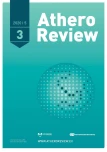Impact of SGLT2 inhibitors and real clinical practice
Authors:
Branislav Vohnout 1,2,3; Jana Lisičanová 3; Andrea Havranová 4
Authors‘ workplace:
Ústav výživy, Fakulta ošetrovateľstva a zdravotníckych odborných štúdií a Koordinačné centrum pre familiárne hyperlipoproteinémie, Slovenská zdravotnícka univerzita v Bratislave
1; Ústav epidemiológie LF UK, Bratislava
2; Diabetologická ambulancia Diabeda, Bratislava
3; Ústav klinického a translačného výskumu, Biomedicínske centrum Slovenskej akadémie vied, Bratislava
4
Published in:
AtheroRev 2020; 5(3): 158-161
Category:
Reviews
Overview
Atherosclerotic cardiovascular disease is the primary cause of death in diabetes patients. Sodium-glucose cotransporter 2 inhibitors (SGLT2i) are a newly identified class of drugs that in addition to glucose lowering effect have shown cardiovascular protective effects and even reduction of all-cause mortality. RWE studies that reflect common clinical practice have confirmed the effect from clinical trials. Possible mechanism of the cardioprotective effect are discussed.
Keywords:
cardiovascular disease – real-world evidence – SGLT2 inhibitor
Sources
- Informace dostupné z WWW: <http://www.diabetesatlas.org>.
- Defronzo RA. Banting Lecture. From the triumvirate to the ominous octet: a new paradigm for the treatment of type 2 diabetes mellitus. Diabetes 2009; 58(4): 773–795. Dostupné z DOI: <http://dx.doi.org/10.2337/db09–9028>.
- Cosentino F, Grant PJ, Aboyans V et al. 2019 ESC Guidelines on diabetes, prediabetes, and cardiovascular diseases developed in collaboration with the EASD. Eur Heart J 2020 J; 41(2): 255–323. Dostupné z DOI: <http://dx.doi.org/10.1093/eurheartj/ehz486>.
- Mach F, Baigent C, Catapano AL et al. 2019 ESC/EAS Guidelines for the management of dyslipidemias: lipid modification to reduce cardiovascular risk. Atherosclerosis 2019; 290: 140–205. Dostupné z DOI: <http://dx.doi.org/10.1016/j.atherosclerosis.2019.08.014>.
- Sarwar N, Gao P, Seshasai SR et al. [Emerging Risk Factors Collaboration]. Diabetes mellitus, fasting blood glucose concentration, and risk of vascular disease: a collaborative meta-analysis of 102 prospective studies. Lancet 2010; 375(9733): 2215–2222. Dostupné z DOI: <http://dx.doi.org(10.1016/S0140–6736(10)60484–9>.
- Ghezzi C, Lo o DDF, Wright EM. Physiology of renal glucose handling via SGLT1, SGLT2 and GLUT2. Diabetologia 2018; 61(10): 2087–2097. Dostupné z DOI: <http://dx.doi.org/10.1007/s00125–018–4656–5>.
- Zinman B, Wanner C, Lachin JM et al. [EMPA-REG OUTCOME Investigators]. Empagliflozin, Cardiovascular Outcomes, and Mortality in Type 2 Diabetes. N Engl J Med 2015; 373(22): 2117–2128. Dostupné z DOI: <http://dx.doi.org/10.1056/NEJMoa1504720>.
- Wanner C, Inzucchi SE, Lachin JM et al. Empagliflozin and Progression of Kidney Disease in Type 2 Diabetes. N Engl J Med 2016; 375(4): 323–334. Dostupné z DOI: <http://dx.doi.org/10.1056/NEJMoa1515920>.
- Neal B, Perkovic V, Mahaffey KW et al. [CANVAS Program Collaborative Group]. Canagliflozin and Cardiovascular and Renal Events in Type 2 Diabetes. N Engl J Med 2017; 377(7): 644–657. Dostupné z DOI: <http://dx.doi.org/10.1056/NEJMoa1611925>.
- Wiviott SD, Raz I, Bonaca MP et al. DECLARE–TIMI 58 Investigators. Dapagliflozin and Cardiovascular Outcomes in Type 2 Diabetes. N Engl J Med 2019; 380(4): 347–357. Dostupné z DOI: <http://dx.doi.org/10.1056/NEJMoa1812389>.
- Zelniker TA, Wiviott SD, Raz I, Im K et al. Comparison of the Effects of Glucagon-Like Peptide Receptor Agonists and Sodium-Glucose Cotransporter 2 Inhibitors for Prevention of Major Adverse Cardiovascular and Renal Outcomes in Type 2 Diabetes Mellitus. Circulation 2019; 139(17): 2022–2031. Dostupné z DOI: <https://doi.org/10.1161/CIRCULATIONAHA.118.038868>.
- Patorno E, Najafzadeh M, Pawar A et al. The EMPagliflozin compaRative effectIveness and SafEty (EMPRISE) study programme: Design and exposure accrual for an evaluation of empagliflozin in routine clinical care. Endocrinol Diabetes Metab 2019; 3(1): e00103. Dostupné z DOI: <http://dx.doi.org/10.1002/edm2.103>.
- Patorno E, Pawar A, Franklin JM et al. Empagliflozin and the Risk of Heart Failure Hospitalization in Routine Clinical Care. Circulation 2019; 139(25): 2822–2830. Dostupné z DOI: <http://dx.doi.org/10.1161/CIRCULATIONAHA.118.039177>.
- Patorno E, Pawar A, Bessette LG et al. Effectiveness and safety of empagliflozin in routine care patients: interim results from the EMPagliflozin compaRative effectIveness and SafEty (EMPRISE) study. Diabetes 2020; 69(Suppl 1): 134-LB. Dostupné z DOI: <https://doi.org/10.2337/db20–134-LB>.
- Schneeweis S, Pawar A, Franklin JM et al. The risk of heart failure hospitalisation among routine care patients initiating empagliflozin vs glucagon-like peptide-1 receptor agonists: a substudy from EMPRISE. EASD 2019; Abstract 687.
- Patorno E, Pawar A, Franklin J et al. Cardiovascular Effectiveness of Empagliflozin Compared to DPP4 Inhibitors and to GLP1 Receptor Agonists: Interim Analysis from the Empagliflozin Comparative Effectiveness and Safety (EMPRISE) Study. AHA 2019 Scientific Session. Oral presentation. Circulation 2019; 140(Suppl 1): A11928.
- Patorno E, Goldfine AB, Schneeweiss S et al. Cardiovascular outcomes associated with canagliflozin versus other non-gliflozin antidiabetic drugs: population based cohort study. BMJ 2018; 360: k119. Dostupné z DOI: <http://dx.doi.org/10.1136/bmj.k119>.
- Pasternak B, Ueda P, Eliasson B et al. Use of sodium glucose cotransporter 2 inhibitors and risk of major cardiovascular events and heart failure: Scandinavian register based cohort study. BMJ 2019; 366: l4772. Dostupné z DOI: <http://dx.doi.org/10.1136/bmj.l4772>.
- Patorno E, Pawar A, Bessette LG et al. Cardiovascular outcomes in older adults initiating Empagliflozin vs. DPP4 inhibitors and GLP1 receptor agonists: a subgroup analysis from the EMPRISE study. Diabetes 2020; 69(Suppl 1): 133-LB. Dostupné z DOI: <https://doi.org/10.2337/db20–133-LB>.
- Vallon V, Thomson SC. Targeting renal glucose reabsorption to treat hyperglycaemia: the pleiotropic effects of SGLT2 inhibition. Diabetologia 2017; 60(2): 215–225. Dostupné z DOI: <http://dx.doi.org/10.1007/s00125–016–4157–3>.
- Verma S, McMurray JJV. SGLT2 inhibitors and mechanisms of cardiovascular benefit: a state-of-the art review. Diabetologia 2018; 61(10): 2108–2117. Dostupné z DOI: <http://dx.doi.org/10.1007/s00125–018–4670–7>.
- Das SR, Everett BM, Birtcher KK et al. 2020 Expert Consensus Decision Pathway on Novel Therapies for Cardiovascular Risk Reduction in Patients with Type 2 Diabetes: A Report of the American College of Cardiology Solution Set Oversight Committee. J Am Coll Cardiol 2020; 76(9): 1117–1145. Dostupné z DOI: <http://dx.doi.org/10.1016/j.jacc.2020.05.037>.
- Dardano A, Miccoli R, Bianchi C et al. Invited review. Series: Implications of the recent CVOTs in type 2 diabetes. Diabetes Res Clin Pract 2020; 162: 108112. Dostupné z DOI: <http://dx.doi.org/10.1016/j.diabres.2020.108112>.
Labels
Angiology Diabetology Internal medicine Cardiology General practitioner for adultsArticle was published in
Athero Review

2020 Issue 3
Most read in this issue
- Hypertriglyceridemia – today and tomorrow
- Genetic testing of familial hypercholesterolemia in clinical practice: statement of Czech Society for Atherosclerosis
- GLP-1 receptor agonists: antidiabetic agents with antiatherogenic effect
- Mendelian randomisation studies: principle and selected examples from cardiovascular medicine
